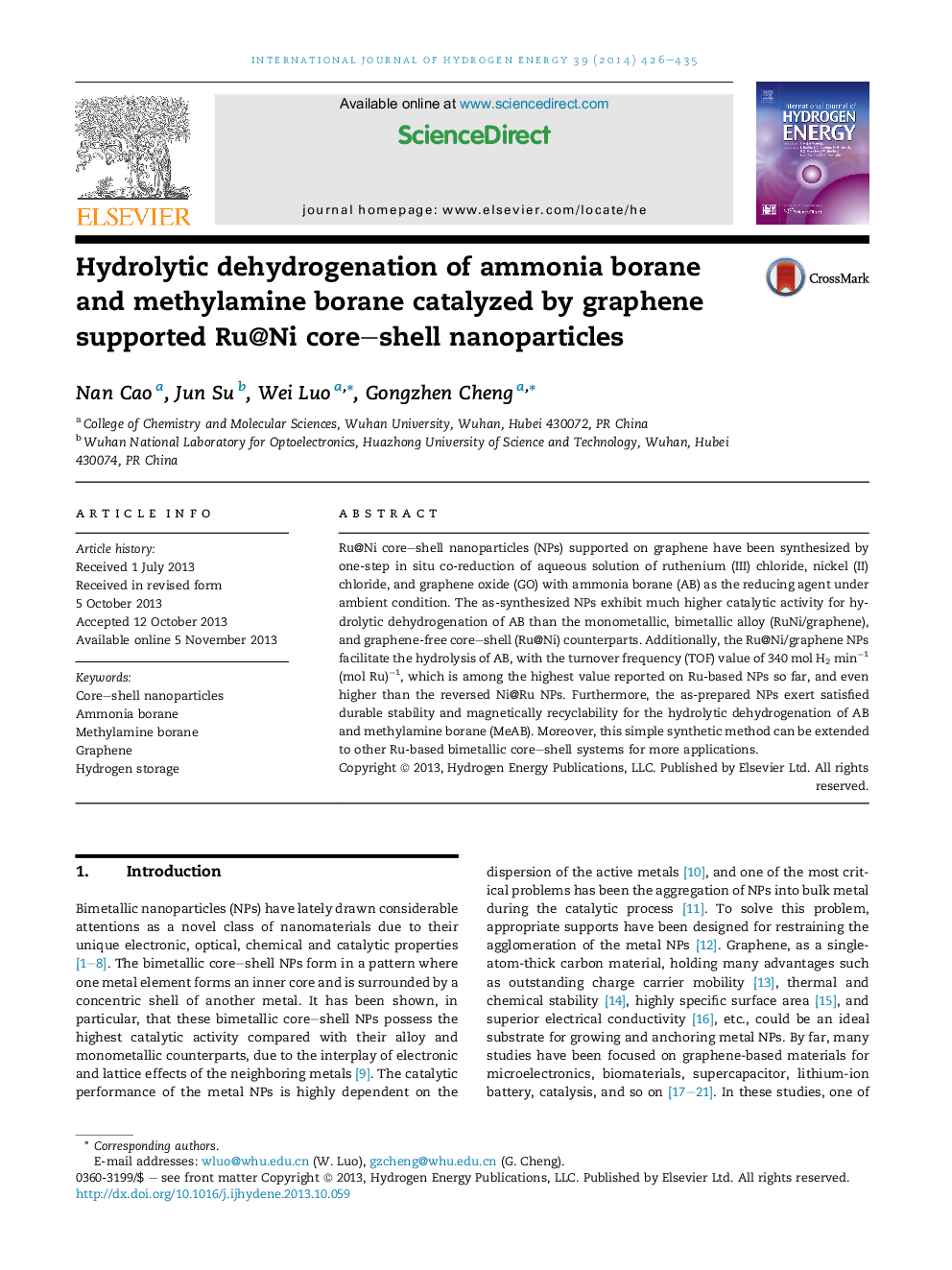| کد مقاله | کد نشریه | سال انتشار | مقاله انگلیسی | نسخه تمام متن |
|---|---|---|---|---|
| 1273956 | 1497508 | 2014 | 10 صفحه PDF | دانلود رایگان |

• One-step in situ synthesizes Ru@Ni core–shell NPs supported on graphene.
• High activity toward the hydrolysis of AB with the TOF value of 340 mol H2.
• Efficient and reusable catalyst for hydrolysis of MeAB.
Ru@Ni core–shell nanoparticles (NPs) supported on graphene have been synthesized by one-step in situ co-reduction of aqueous solution of ruthenium (III) chloride, nickel (II) chloride, and graphene oxide (GO) with ammonia borane (AB) as the reducing agent under ambient condition. The as-synthesized NPs exhibit much higher catalytic activity for hydrolytic dehydrogenation of AB than the monometallic, bimetallic alloy (RuNi/graphene), and graphene-free core–shell (Ru@Ni) counterparts. Additionally, the Ru@Ni/graphene NPs facilitate the hydrolysis of AB, with the turnover frequency (TOF) value of 340 mol H2 min−1 (mol Ru)−1, which is among the highest value reported on Ru-based NPs so far, and even higher than the reversed Ni@Ru NPs. Furthermore, the as-prepared NPs exert satisfied durable stability and magnetically recyclability for the hydrolytic dehydrogenation of AB and methylamine borane (MeAB). Moreover, this simple synthetic method can be extended to other Ru-based bimetallic core–shell systems for more applications.
Journal: International Journal of Hydrogen Energy - Volume 39, Issue 1, 2 January 2014, Pages 426–435